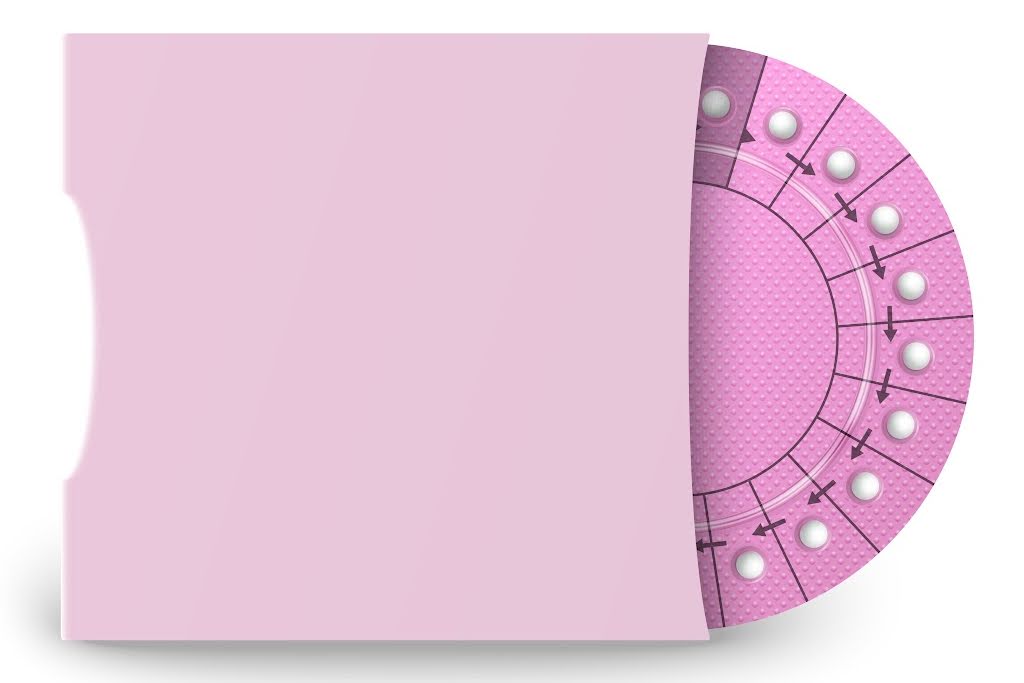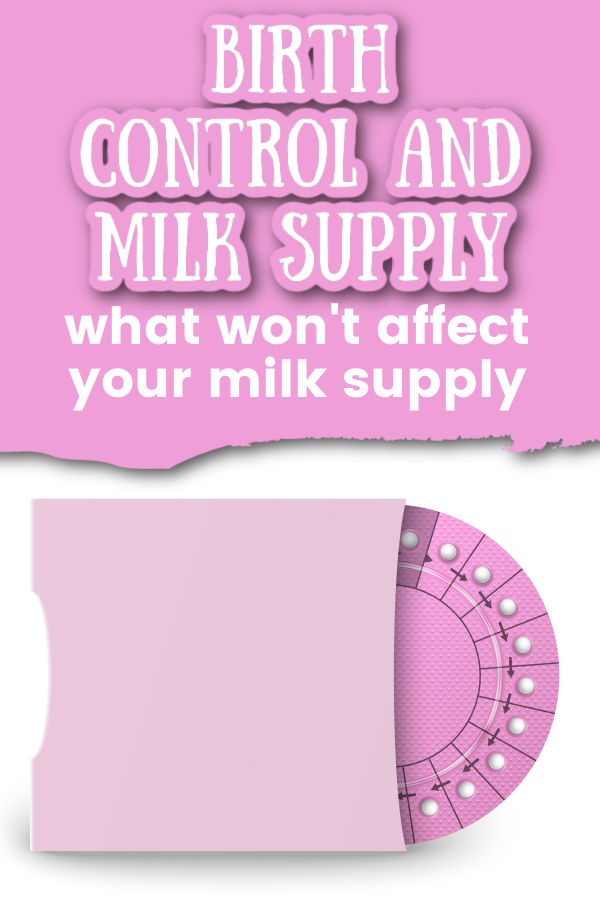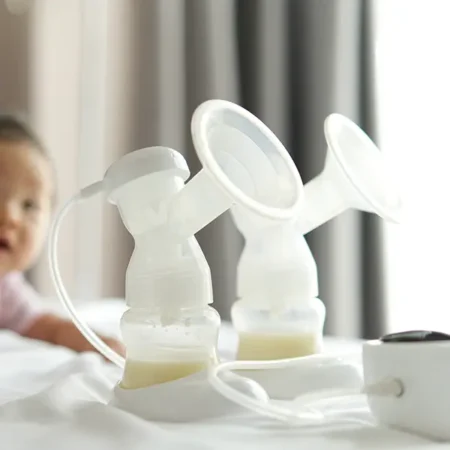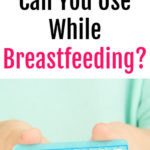You might have heard that some birth control options can affect your breast milk supply. So what birth control is effective and safe for breastfeeding? Here is what to consider and what you should know about birth control and milk supply.

This post may contain affiliate links, which means if you click a link and purchase something, I may make a small commission at no additional cost to you. I only recommend products I love! More information here.
Birth control you may want to avoid while breastfeeding
If at all possible, avoid hormonal birth control options that contain estrogen to avoid issues with milk supply. From Infant Risk:
We have no way to predict the outcome of breastfeeding once estrogen-containing birth control products are started. Some mothers may do fine and others can completely dry up. Therefore, if estrogen containing contraception is chosen, it is advised that women use the lowest estrogen dosage appropriate and monitor their milk supply. Mothers who have problems with milk production and those who are breastfeeding an older child (one year old or more) should be especially cautious.
Common birth control options with estrogen that should be avoided if possible include:
1. Combination birth control pill
There are two types of birth control pills, combination pills with both estrogen and progesterone, and those with just progesterone (also called the mini-pill, discussed below).
Combination birth control pills are made by quite a few manufacturers and are marketed under different names, including Alesse, Estrostep, and Yaz.
Combination pills work by suppressing ovulation and are generally more effective than progesterone-only pills, but have the downside of potential impacts to milk supply for breastfeeding mothers.
2. Birth Control Patch
The birth control patch (Climara) also suppresses ovulation; because it contains estrogen, it has the same possible side effects to milk supply.
3. Vaginal Birth Control Rings
Nuvaring also works by preventing ovulation and contains estrogen.
Hormone-based birth control that is probably okay while breastfeeding
If a hormonal birth control option is desired, there are a few progesterone-only options that are available. These all work by suppressing ovulation, thickening cervical mucous, and thinning the lining of your uterus. The different options include:
1. Progesterone-only birth control pill (also called the mini-pill)
This pill is marketed as Ortho Micronor, Camila, and a few others. To maximize effectiveness, it needs to be taken at the same time every day.
I took the mini-pill as a new mom and struggled to remember to take my pill at the same time since I was up around the clock and didn’t really have a schedule. You may want to set an alarm on your phone for when it’s time to take it.
2. Depo-Provera
Depo-Provera is a shot containing progesterone that you would need to get every 12-13 weeks.
3. Hormonal IUD
The Mirena and Skyla IUDs are a small, T-shaped plastic device that is inserted into the uterus and releases progesterone. It is effective for up to 5 years.
(I got a Mirena about 8 weeks after my third baby was born, still have it, and love it. I had no issues with milk supply and have much lighter periods.)
4. Birth Control Implant
This implant goes in your arm and prevents pregnancy for up to three years, and then needs to be removed.
Non-hormonal birth control options that won’t tank Your Milk Supply
Below are a few non-hormonal options that have no effect on milk supply.
Condoms
Both male and female condoms are good non-hormonal options for preventing pregnancy and STDs.
They are a good choice when you’re trying to figure out what you method you want to use, and also as a back-up birth control method if you’re on the mini-pill.
Abstinence
It’s 100% effective and maybe not that hard to achieve when you’re exhausted with a new baby!
However, it may not be the best option for a lot of people for obvious reasons.
Vasectomy/Tubal Ligation
If you’re sure you’re done having kids, a permanent birth control solution might be the best option.
Natural Family Planning
This means tracking your cycle by taking and charting your temperature each day.
I loved tracking my cycle when I was trying to conceive (definitely read Taking Charge of Your Fertility if you’re interested in this method), but with the odd schedule of life with a newborn and irregular cycles when breastfeeding I struggled.
Paraguard IUD
This IUD is a plastic device covered with copper coils.
The copper produces an inflammatory reaction in the uterus that kills sperm and eggs, preventing pregnancy. It works for up to 10 years.
What is your experience with birth control and milk supply? Tell us in the comments!
References
- Infant Risk Center. “Safe Use of Birth Control While Breastfeeding.” https://www.infantrisk.com/content/safe-use-birth-control-while-breastfeeding
- Mayo Clinic. “Combination birth control pills.” https://www.mayoclinic.org/tests-procedures/combination-birth-control-pills/about/pac-20385282
- Mayo Clinic. “Minipill (progestin-only birth control pill)”. https://www.mayoclinic.org/tests-procedures/minipill/about/pac-20388306














